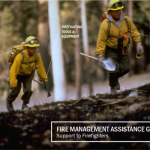SEATTLE – The Federal Emergency Management Agency (FEMA) has authorized the use of federal funds to help with firefighting costs for the Suncrest Fire burning in Chelan County, Washington.
FEMA Region X Regional Administrator, Kenneth D. Murphy determined that the fire threatened such destruction as would constitute a major disaster. Murphy approved the state of Washington’s request for a federal Fire Management Assistance Grant (FMAG) at 9:19 p.m. PDT on August 27, 2016.
The fire started on August 27, 2016, and had burned in excess of 400 acres of state and private land. At the time of the request, the fire was threatening 470 primary residences in and around the Suncrest area of the city of Leavenworth. Voluntary evacuations were issued for approximately 1,880 people. There are six other large fires burning uncontrolled within the state. At the time of the authorization, the fire was zero percent contained.
The authorization makes FEMA funding available to pay 75 percent of the state of Washington’s eligible firefighting costs for managing, mitigating and controlling designated fires. These grants provide reimbursement for firefighting and life-saving efforts. They do not provide assistance to individuals, homeowners or business owners and do not cover other infrastructure damage caused by the fire.
Fire Management Assistance Grants are provided through the President’s Disaster Relief Fund and made available by FEMA to assist in fighting fires that threaten to cause a major disaster. Eligible items can include expenses for field camps; equipment use, repair and replacement; mobilization and demobilization activities; and tools, materials and supplies.
See the original post –







